There was a time, when most cars featured canvas and double-duck roofs. They were the least expensive route to some aspects of vehicle ownership. Of course, in a post-Ralph Nader era (‘Unsafe At Any Speed’ author, 1965), which shook up an otherwise lackadaisical attitude assumed by the world motor industry towards vehicle safety, it became all-change.
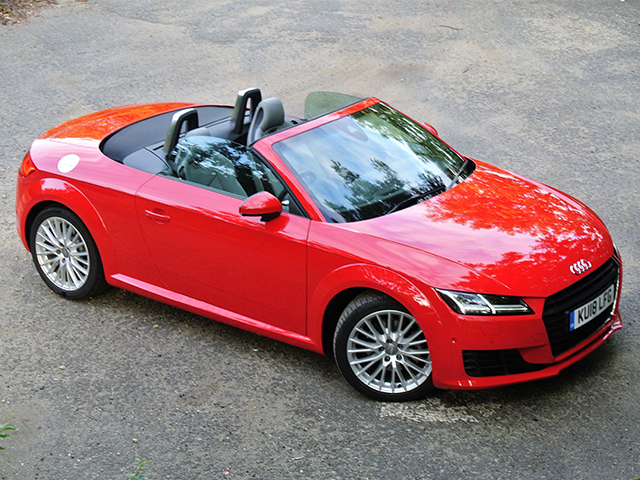
Nader insisted that convertible car occupants were risking their lives just getting into their cars. Roll-bars started to appear subsequently, along with cabriolet roofs, where only the centre section could be removed for the wind-in-the-hair thrills. In fact, the earlier convertible market was almost killed off by the safety enhancements introduced. On reflection, while Nader was a disruptive influence, he had a point to make. He was correct.
Ironically, drop-top lovers were amazingly tolerant of the body flexibility inherent to their machines. A phenomenon known as ‘scuttle shake’ was de rigueur, dynamically undesirable and did lead (ultimately) to a major destructive influence on the cars themselves; they rattled themselves to death, usually long before the ‘tin worm’ made its impact felt.
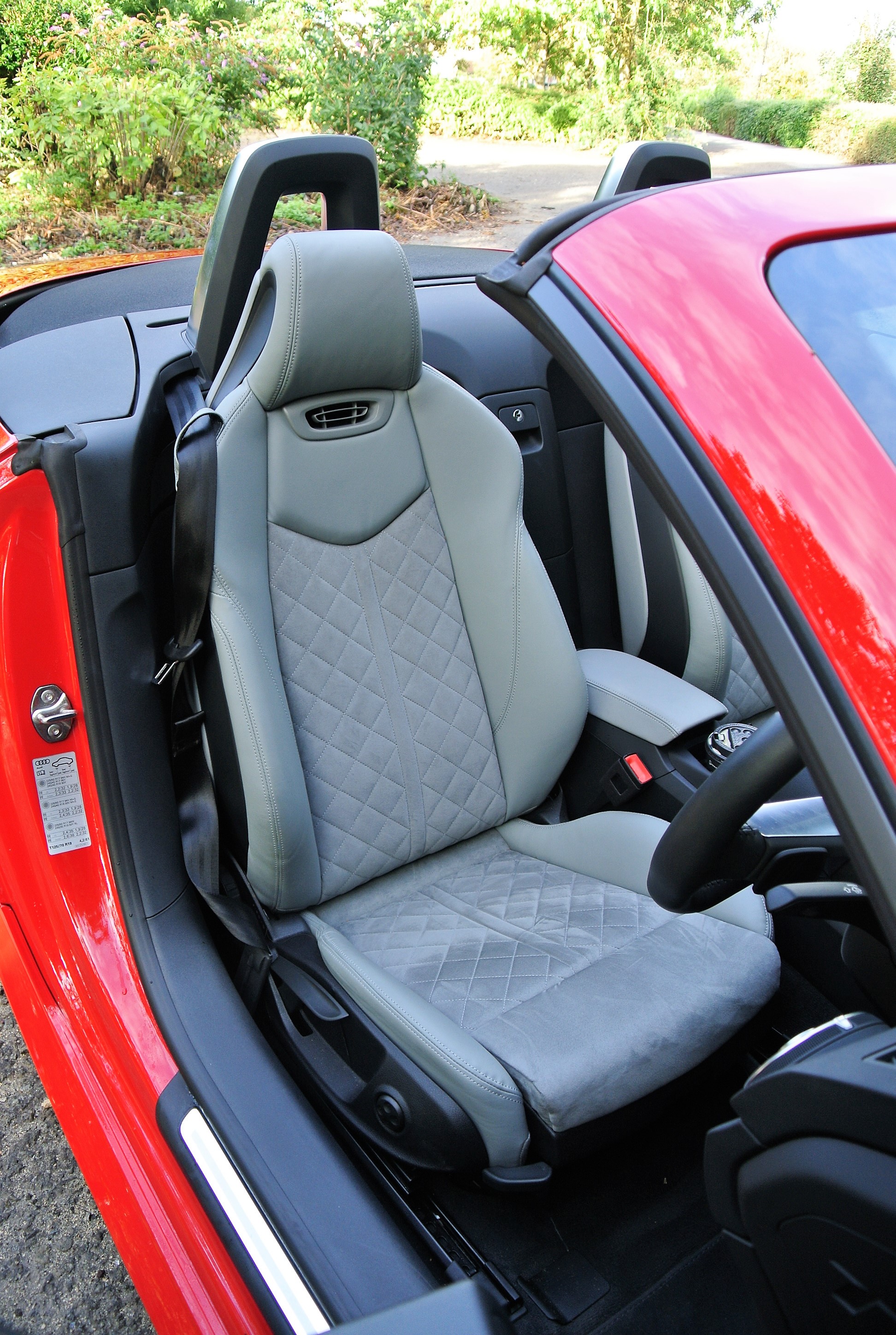
Today’s convertible models still suffer from very minor issues but they are more resilient, significantly stronger, safer and even more durable. Mind you, park in the wrong area and you may discover the lunatic fringe, armed usually with Stanley knives, who believe that it is their bounden duty to score through the canvas and (perhaps) help themselves to whatever you may have left injudiciously ‘on view’. For the rest of the time, a drop-top offers especial pleasures, not least being the 93.5m miles of headroom!
The Audi TT Roadster, designed originally by Peter Schreyer (now Kia’s design boss) and named after the famous Isle of Man Tourist Trophy race, has been available since 1999, one year after the coupe arrived. Influenced initially by the German Bauhaus styling movement, the car has always been based on the same platform as the VW Golf, Skoda Octavia, Seat Leon, VW Beetle, Audi A3 and several other compact models from the VW Group line-up. In its current, third generation form, it possesses a delightfully connected feel that seems to encourage a ‘press-on’ driving style; its relatively short wheelbase, firm but adjustable suspension settings and superb electro-mechanical power steering work in marvellous union with the driver’s dialled-in instructions.
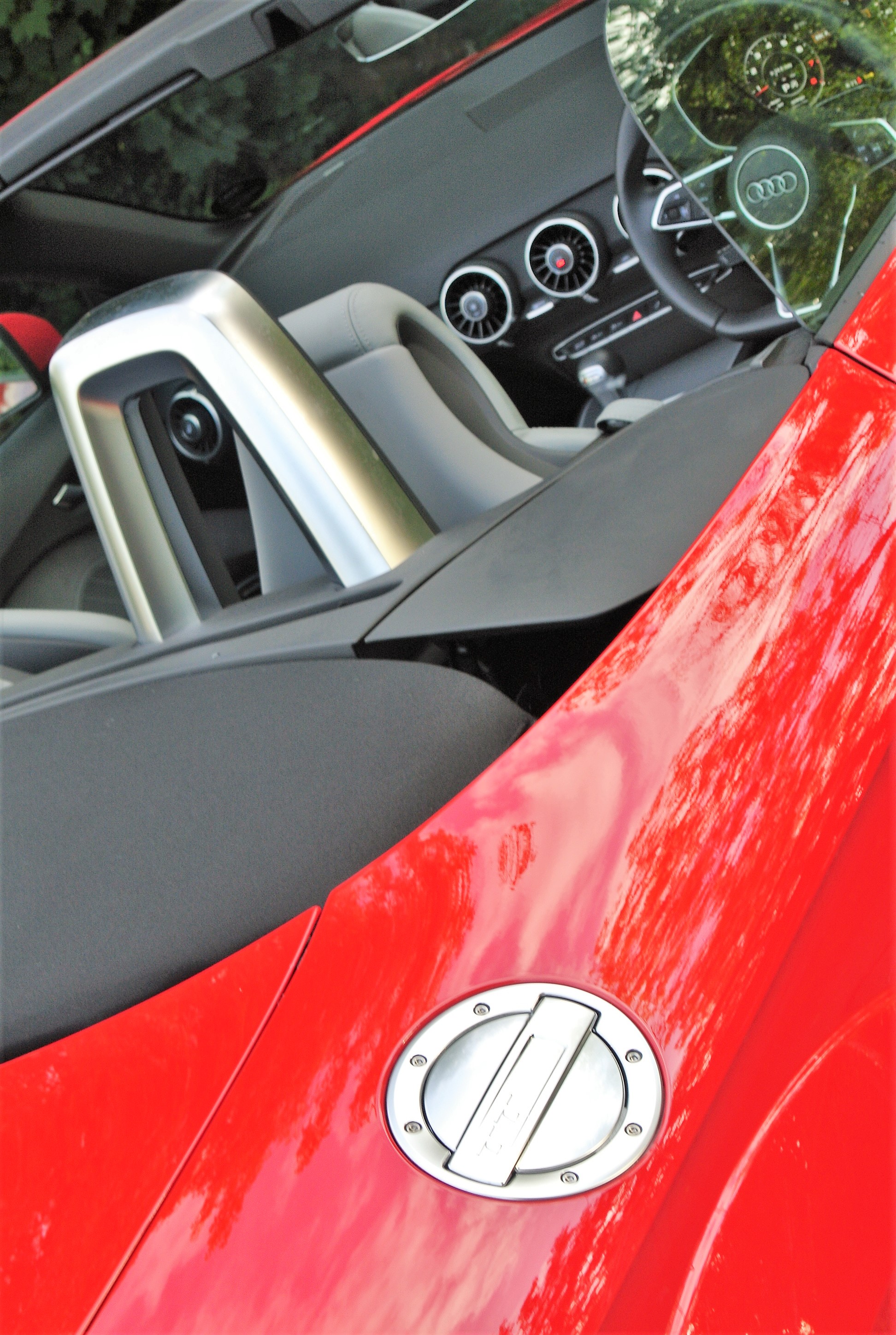
In fact, it is the car’s superior dynamic set-up that is its ‘major-domo’. Strictly a close-coupled two-seater, there is not even a hint of body-flex, as you dip into its vast array of sporting competence. Naturally, it is aided by the VW Group’s superb 1,984cc, TFSi turbo-petrol, four-cylinder engine. Developing a moderate 230bhp and accompanied by 273lbs ft of torque between 1,400-4,300rpm, it incorporates ‘stop-start’ technology, emits 151g/km CO2 and returns 43.5mpg on the latest WTLP test regime.
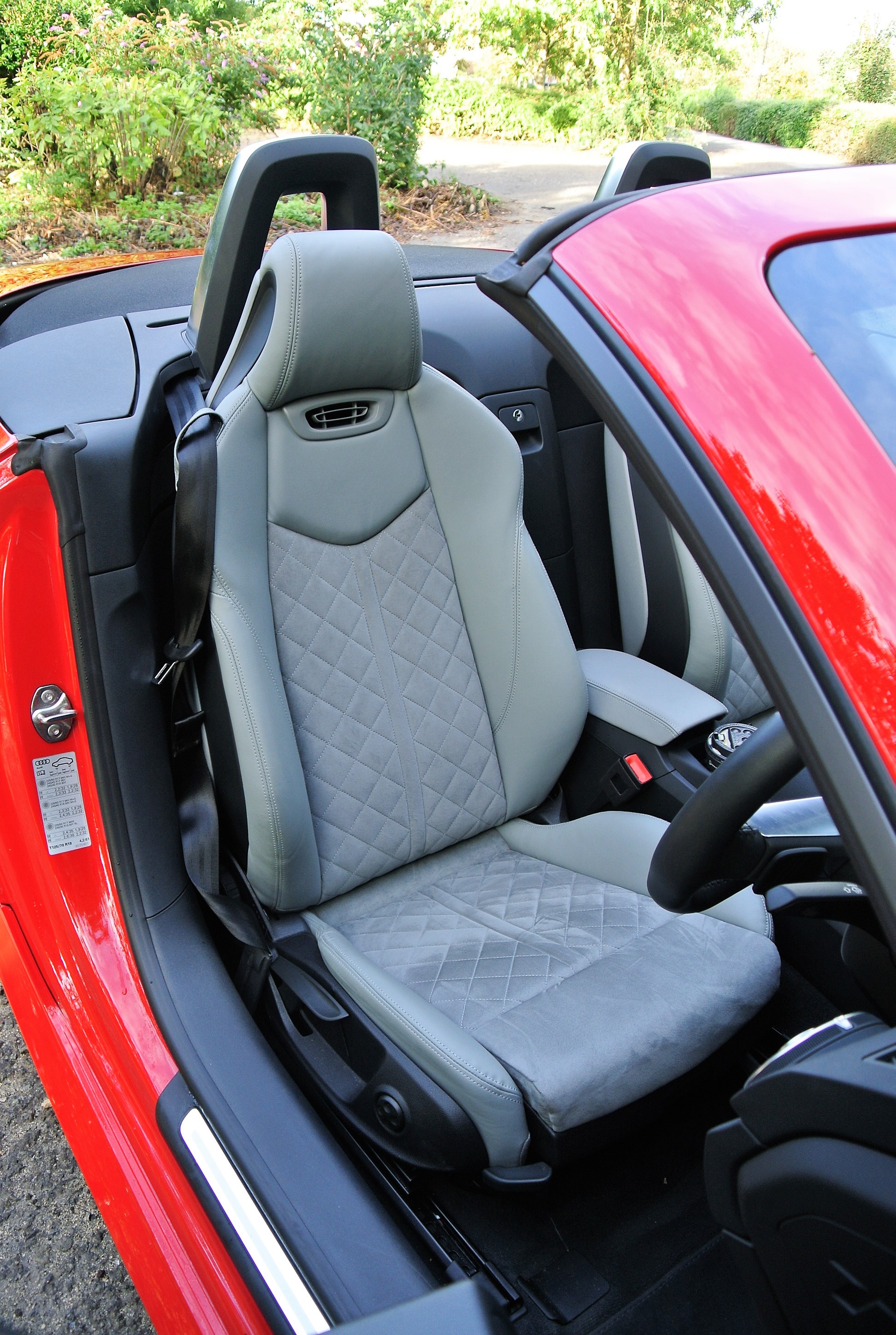
However, away from its clinical, numerical attributes and driving its front wheels alone, through a six-speed, S-Tronic, twin-clutch, automated-manual gearbox, it is capable of reaching a maximum speed of 155mph, after despatching the 0-60mph benchmark in a cool 5.8s. It possesses all the ‘right stuff’ to provide a stirring driving experience, even though the exhaust note is strangely ‘flat’. Yet, delve into its eager rev-ability and each leggy, instant full-throttle upshift (should the car be in ‘Sport’ setting, of both chassis and gearbox) is accompanied by a head-turning crackle from the exhaust pipes. It is very ‘gamey’.
Having mentioned its lovely dynamic balance earlier, it is worth highlighting that, in front-wheel-drive terms, the TT Roadster can spin its tyres cheekily on exits from roundabouts and tight bends, despite the presence of stability and traction controls. I should state that it is meant to, as part of that engagingly sporting drive experience and its brakes deliver prodigious stopping performance. Yet, the Roadster never feels less than under the complete control of the driver.
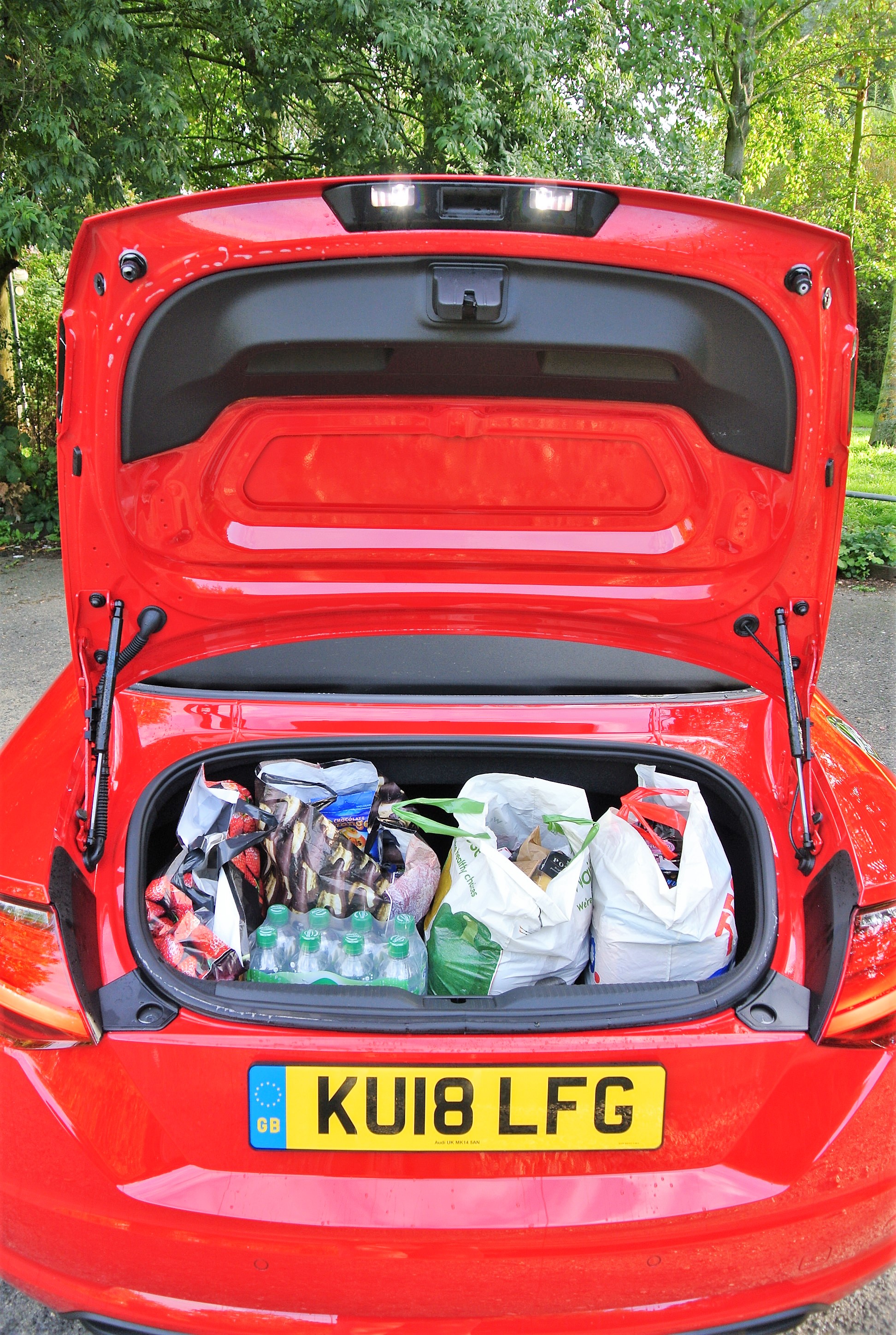
Of course, as a drop-top, its boot is never going to be the most spacious. For a start, some of its potential height is lost to the lowered roof and its mechanicals. However, the boot can be loaded-up without worrying about crushing its contents, as there is as much space with the roof lowered, as when it is raised. There is also compartmentalised space below the floor for personal possessions. Although awkward to reach, a lockable lid between the front seatbacks provides more oddment space and is ideal for jackets, or warm tops, while the glovebox can also be locked for added security. Apart from that, a sliding lid in the centre console reveals a useful storage slot and an induction charging-pad for the latest category of mobiles.
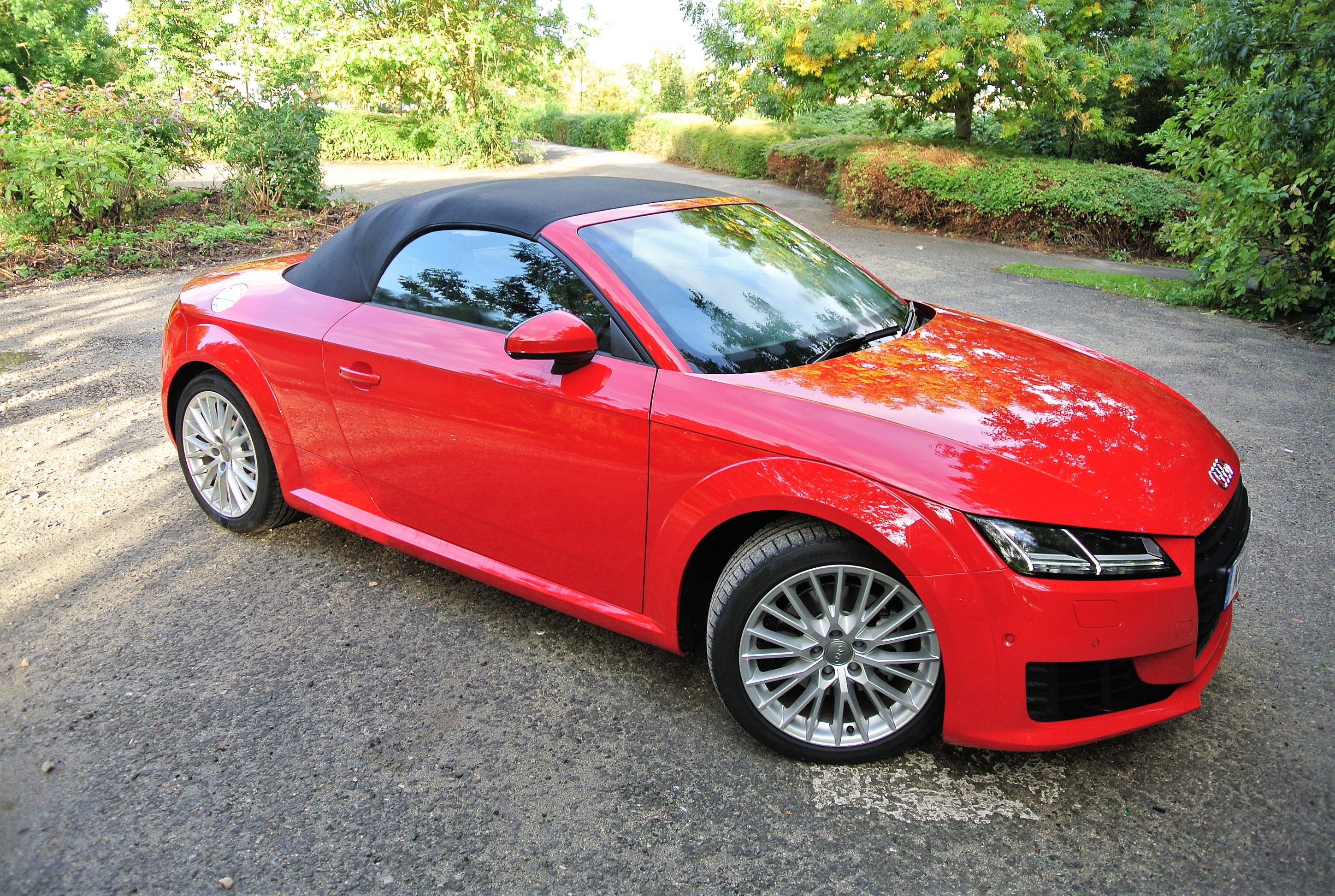
Although cabin access is hindered by the low roof height, when it is erected, there is excellent legroom and decent seat and steering column adjustability, even for a two-metres tall driver (me!). Roof-up, the cockpit is both well-insulated and cosy. With it down, it can be a bit blustery, although a wind-screen that slots between the roll-bars can result in a surprisingly refined cabin environment, as long as the performance envelope is not stretched to its limits.
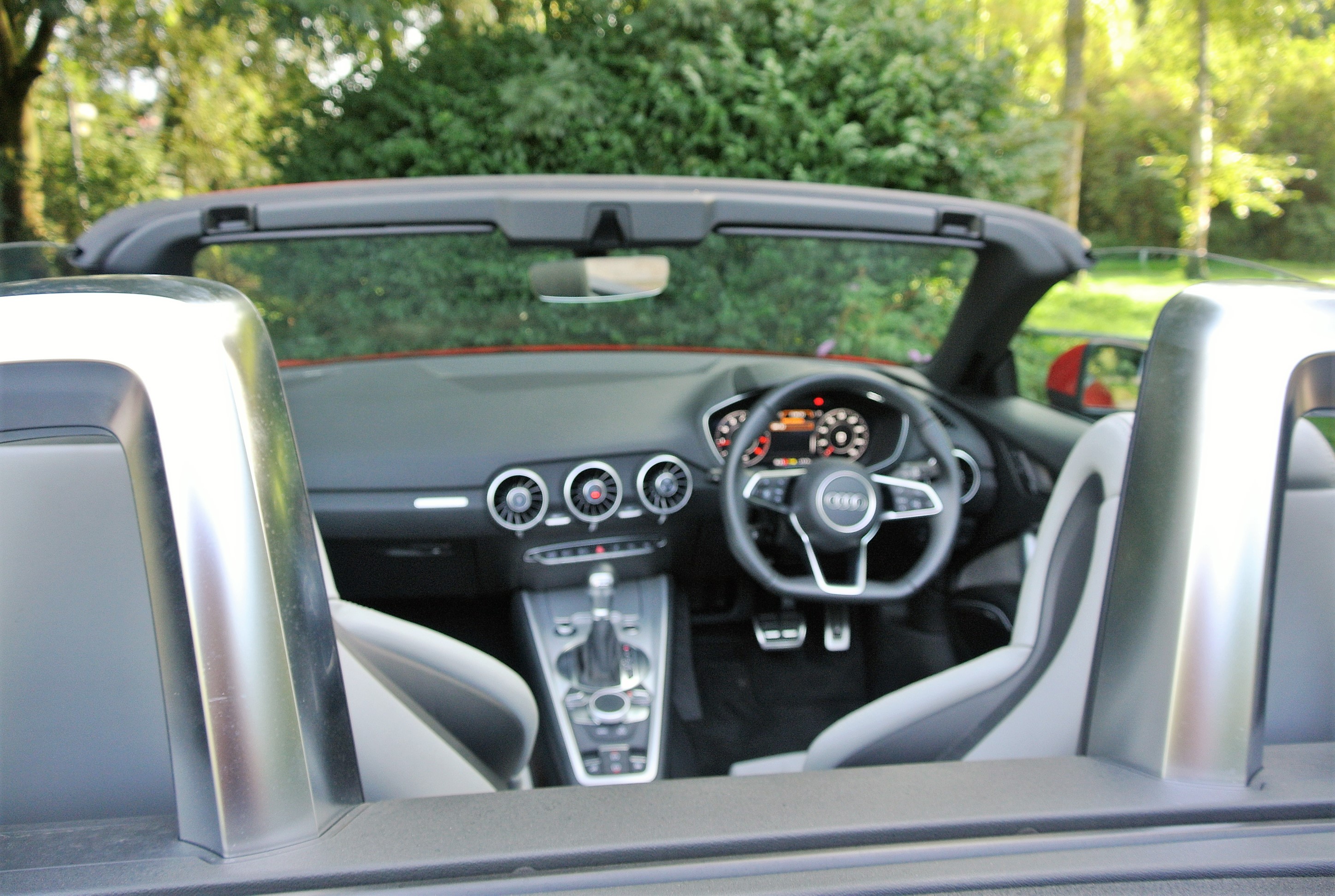
The centres of the beautifully stylish, turbine-look, cabin air-vents contain the heating and ventilation controls, with the end of dash vents featuring seat heating and heated ‘air-scarf’ controls for even greater occupant comfort. An excellent Bang & Olufsen stereo head unit is fitted and all of the alloy fillets and trimmings within the cockpit are also produced by the Danish firm specifically for Audi. As interior space is at a premium, all read-outs appear on the digital dashboard, including the sat-nav, which can be reconfigured to fill the panel, as an element of several selectable displays. I love its sparseness. There are no additional touch-screens, or distractions, from the primary driver’s-car intentions, which sums up the Audi TT Roadster to perfection.